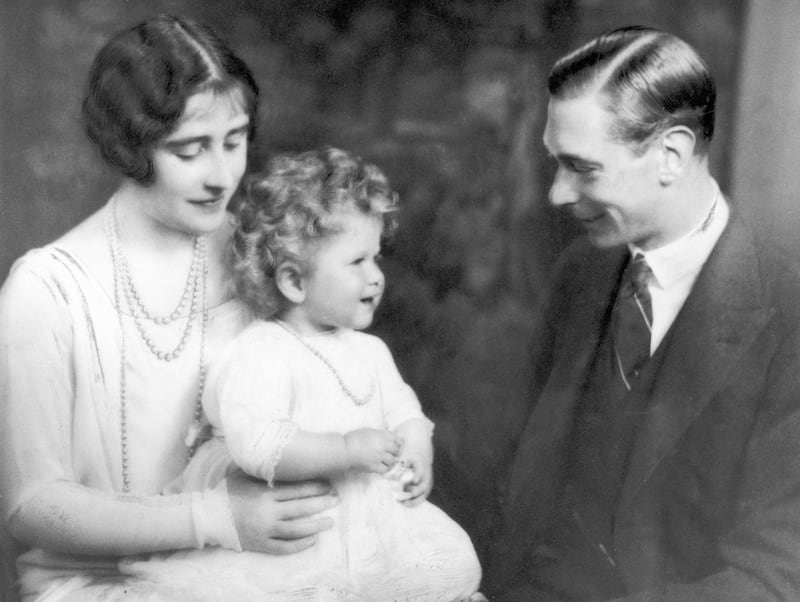If you walk round the top of that great symbol of Britishness, the Rock of Gibraltar, you come to a clearing overlooking the harbour and dockyards. It is marked by an unintentionally hilarious plaque: “At this spot, HM Queen Elizabeth II and HRH Duke of Edinburgh stood and looked out over Gibraltar during their visit to the rock May 10th-11th, 1954.”
Has ever a monument been raised to mark such a heroic achievement: here a woman stood and looked?
And yet, the monument is in its own way a fitting one for Queen Elizabeth; as its date reminds us, she stood and looked — and sat and was looked at — for a very, very long time. Had the title not already been taken for a satirical novel and movie, the definitive account of her public life could be called Being There.
[ Britain’s Queen Elizabeth dies, aged 96Opens in new window ]
[ Susan McKay: Queen Elizabeth’s death is an earthquake for unionistsOpens in new window ]
[ Queen Elizabeth obituary: A diligent ruler who helped thaw Anglo-Irish relationsOpens in new window ]
[ Queen Elizabeth: The queen in Britain’s public imaginationOpens in new window ]
[ President and Taoiseach pay tribute to Queen Elizabeth following her deathOpens in new window ]
One of the things we always had to remember about her is that being there, and staying there, was not something she took for granted. She was raised in a multinational family business, some of whose branches came to a bad end. Kaiser Wilhelm of the German Reich was Elizabeth’s grandfather’s first cousin.
Wake up, people: Here’s what the mainstream media don’t want you to know about Christmas
Chasing the Light review: This agreeable Irish documentary is all peace and healing. Then something disturbing happens
Are Loughmore-Castleiney and Slaughtneil what all GAA clubs should strive to be?
Your work questions answered: Can bonuses be deducted pro-rata during a maternity leave?
Both Elizabeth and her husband were related by blood to the Romanovs — it was Philip’s DNA that was used in 2016 to identify the remains of two of the children of Tsar Nicholas and his wife Alexandra, murdered by the Bolsheviks in 1918. (Elizabeth’s grandfather, George V, refused to grant asylum to “Cousin Nicky” and his family, for fear of revolutionary contagion.)
Philip himself was a nephew of the deposed King Constantine of Greece and had to be evacuated from the country as a small child. Elizabeth was never likely to forget that the primary aim of any monarchy is its own survival.
There is a photograph of Elizabeth, taken in 1928, when she was two-years-old. She is barefooted, in a flouncy white dress, perched on a small but definitely thronelike wooden armchair. Her back is completely straight and, eerily, she already wears her official smile, the regal rictus that appears completely unchanged in pictures of her in her 90s.

It is not the giggle or grin of a toddler but the expression of a public figure: the mouth open just wide enough to show off the fine teeth, the muscles forming perfectly symmetrical channels from the edge of the nostrils to the tip of the chin. And it is fully reproducible.
You can see it, tooth for tooth and muscle for muscle, as she smiles among the syringa bushes at Windsor in 1941 or disembarks the state coach after her coronation in 1953 or stands on the balcony of Buckingham Palace in 1985, pretty grandchildren at her elbow, her son Charles and daughter-in-law Diana posing beside her in a game of happy families, or as she beams from her official portrait in 1997, defying a surge of popular resentment in a year when Elizabeth had made her biggest mistake by managing to seem more visibly upset by the decommissioning of her royal yacht, Britannia, than by Diana’s death.

How will the UK cope with losing Queen Elizabeth II?
It is a beautiful smile but also utterly impersonal — an unchanging symbolic object like the crown and the sceptre. And it expressed its owner’s view of how a constitutional monarch could survive at the head of a state undergoing immense changes: look pleasant and give nothing away. If it says anything at all it is simply: I will outlast you all. Indeed, she outlasted not just government after government, not just the loss of the empire she was born into, not just the disappearance of a culture of deference, but the vanishing of the one thing that seemed indispensable to monarchy: enchantment.
0 of 31
One of the strangest moments in her reign was surely the rock concert held in the gardens of Buckingham Palace on the 50th anniversary jubilee of her reign in 2002. It was strange in part because of one star who offered to play but was not included: Johnny Rotten, who 25 years earlier had marked the previous jubilee with the magnificent snarl: “God save the queen/ She ain’t no human being.” This time, his desire to be included as a royal tribute act was sincere and unironic, the curled-lip sneer of “We mean it ma’am” in that song having become a completely straight face. Her Majesty had seen off even The Sex Pistols.
But the event was also strange for the arrival of the queen herself towards the end of the concert. She was greeted by the host Barry Humphries in his guise as Dame Edna Everage, an alternative queen, squeaking shrilly: “The jubilee girl is here, possums!”
The next act up was Paul McCartney, who immediately launched into Her Majesty, the cheeky little coda to The Beatles’ Abbey Road album in 1969: “Her Majesty’s a pretty nice girl/ But she doesn’t have a lot to say ... She just smiled, of course, perhaps reflecting that this was indeed her secret weapon. She didn’t have a lot to say — even about the fact that other ageing British icons were now presenting themselves before her as her equals, free to engage in good-natured joshing between fellow veterans of super celebrity.
Long before that moment, in 1986, The Smiths had proclaimed The Queen is Dead, and in a sense they were right. Her Majesty presided over the death of her own majesty, the replacement of consecrated mystery by sanctified celebrity. Ironically, she was helped in this by the very woman who seemed to pose the greatest threat to her family business. It was Diana who completed the transformation of the royals from the fortunate cousins of the Romanovs into the precursors of the Kardashians.
Elizabeth ceased to enjoy the glamour of enchantment, but she survived into an age when being famous not for what you did but just for being famous was all the rage. Fame made her invulnerable to the demise of everything she was supposed to symbolise — the continuity of the empire, the serenity of the state, the sacredness of her United Kingdom.
And all the time, history accreted around her. She practised a peculiarly luxurious brand of stoicism, leading a life of extreme privilege yet somehow seeming to embody the virtues of great endurance. She got more and more credit simply for keeping going. Her being there was its own point — she had been there, like no one else had, since the second World War, and here she still was.
She had an answer to The Smiths’ refrain in that song: “Has the world changed or have I changed?” It has and I have not. A more complex and ambitious person would have been ashamed to say this, but Elizabeth always knew that it was what those who needed her wanted to hear. So long as she could extract so much credit from her mere survival, the anachronistic institution she embodied could survive with her.




































